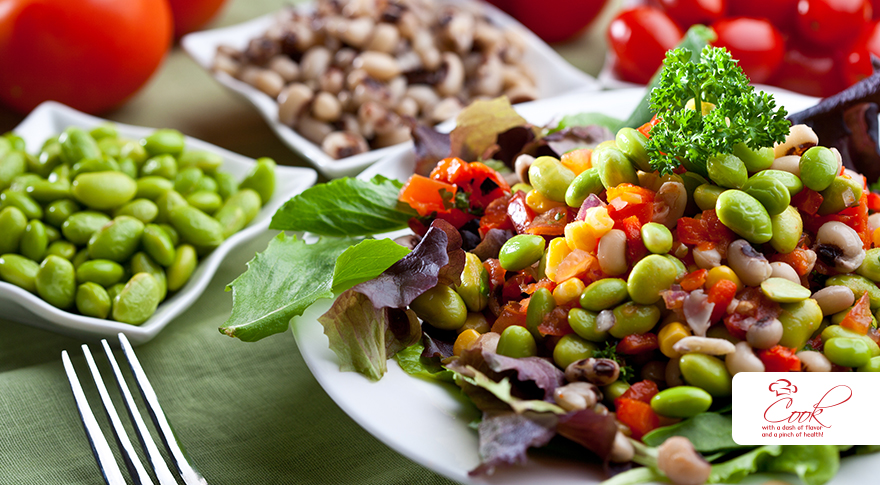Salads are often considered to be boring or only for individuals who wish to lose weight. However, with a little effort, a salad can be an exciting way to get your daily serving of vegetables and fruits.
Most ingredients in salads are raw and unprocessed, thereby retaining all the vitamins and minerals. Start with dark green leafy vegetables, such as spinach or romaine lettuce, as they are more nutritious than iceberg lettuce. Add an assortment of fresh vegetables such as: broccoli, carrots, colorful peppers, beets, cauliflower, purple cabbage and red onions to increase your fiber, vitamin, mineral and antioxidant intake. The more colorful the salad, the more variety of nutrients and particularly cancer- fighting antioxidants it contains. Top your salad with a handful of beans, seeds, nuts and a light dressing. Keep a large salad for everyone to share at the dinner table, and fill half of your plate with a salad. This will help you control the amount of food you eat. Alternatively, add protein such as a piece of baked chicken or fish and turn your salad into a healthy and satisfying meal. Yogurt raita and salsa are other healthy salad dressings.
Here are some tips to keep in mind:
- Your salad is only as healthy as the choices you make. Stay away from high-fat items such as regular-fat cheese, croutons and regular-fat dressings. Also avoid mayonnaise-based salads such
as chicken, egg and tuna salad. - Use low-fat versions of your favorite salad dressing, or better yet, top your salad with lemon juice, a few drops of olive oil, a pinch of salt and pepper for a delicious and all natural dressing. Yogurt raita and salsa are other healthy salad dressing options.
- When eating out, choose a salad as your side item instead of fries.
- Always ask for salad dressing on the side. In this way you can drizzle it with your fork and control how much you add.
- Make your salad interesting by experimenting with a different variety of ingredients. This will help to add multiple nutrients and antioxidants, and it will keep you from getting bored.
- Include fruits such as apples, tangerines or dried cherries to make salads more flavorful.
- Don’t skip the sprouts! Add alfalfa or bean sprouts as they are packed with nutrients.
- Increase your protein and fiber intake by adding beans such as edamame, black beans and red beans. Try the recipe in this section for Edamame and Chora Salad.
- For convenience, buy pre-cut and washed vegetables. Alternatively, save time by preparing a large quantity of salad ingredients, portioning them in zipper bags and keeping in the fridge for 3-4 days. You are more likely to eat it if it is ready to use.




